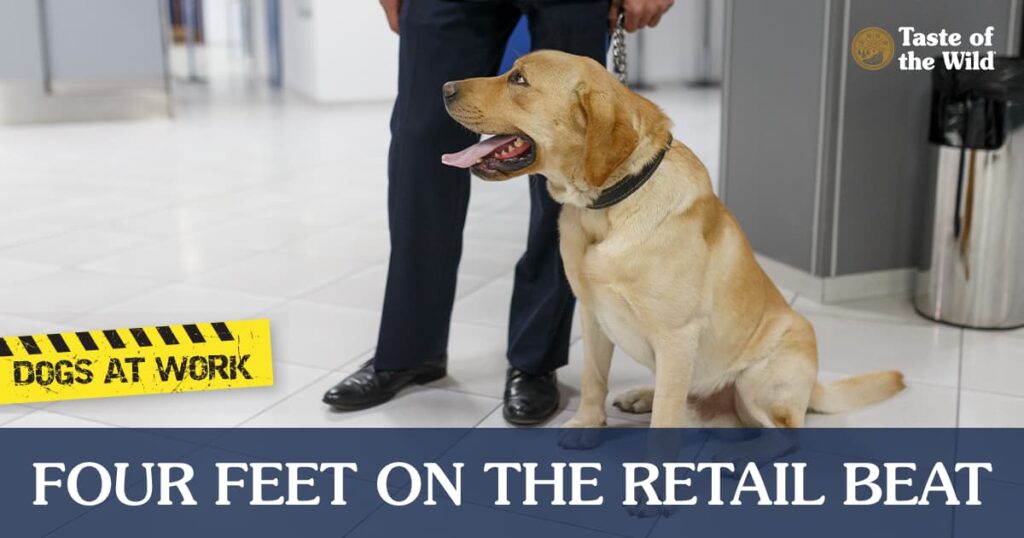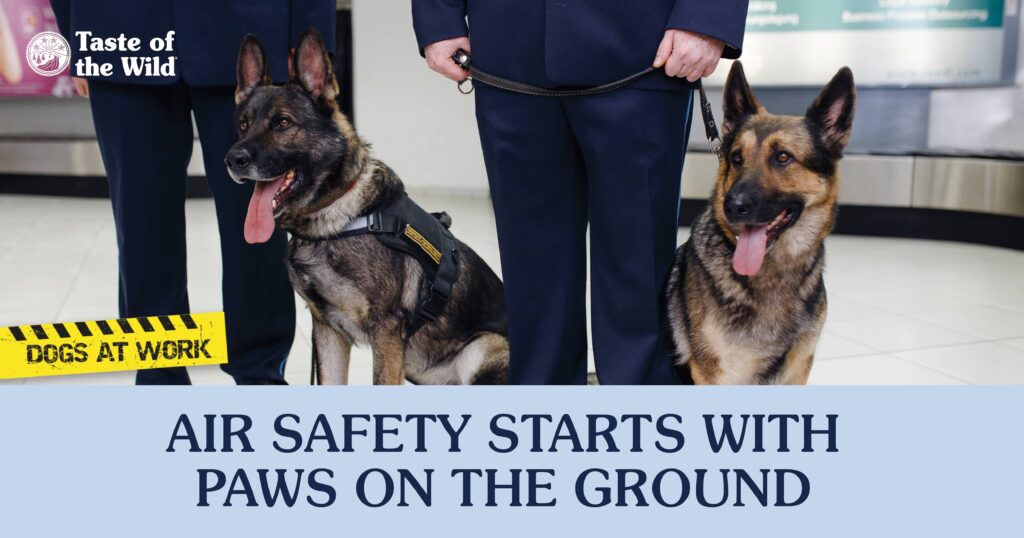
If your idea of shopping center security is the bumbling, Segway-riding Paul Blart of the movie Mall Cop, think again. Many malls now have sophisticated, integrated security plans, which may include trained dogs and handlers.
Depending on the needs of the mall, security dogs may simply provide surveillance and crowd control, so shoppers and retailers can feel safe. Trained dogs add an extra visual and psychological deterrent against trouble.
But some malls also train dogs to put their keen sense of smell to work, detecting substances such as explosives, drugs and firearms. It’s all in a day’s work for mall security dogs.
Not a job for toy poodles
Mall security dogs not only have to look intimidating, they need to have the right temperament and a strong drive to guard, bark or attack on command. That’s why trainers typically rely on the intelligent and alert dogs of the working group, such as German shepherds, Belgian Malinois, Dutch shepherds, Dobermans and Rottweilers.
Training starts early
The foundation of any security-dog training program is socialization and obedience training as puppies. Socialization is necessary to help dogs feel comfortable around people, other dogs and crowds. And basic obedience training is a must before moving on to advanced guard training with controlled aggression.
Dogs are usually paired with a handler for guard training. The dog will learn to recognize a threat and attack on command, but equally important, they need to learn how to let go on command and transition from an aggressive to a calm demeanor.
Most detection training is done by teaching the dog to recognize and track a particular scent. Each time the dog successfully identifies the item, they are given positive reinforcement in the form of praise and treats or toys. But training doesn’t stop once the dog and handler are certified; learning must continue on an ongoing basis to keep security dogs responsive to commands.
On patrol at the largest mall in North America
How do you provide security across 5.6 million square feet of retail space? For the Mall of America in Minnesota, the largest shopping and entertainment complex in North America, mall security dogs are just part of the answer. Dogs can be on the job day or night, 7 days a week, patrolling inside the mall or in the parking areas outside. They sniff at any unattended items, trash cans and vehicles.
The mall also boasts one of the five largest K-9 explosive detection units in the United States. Occasionally, the unit is asked to sweep big events in locations outside of the mall.
People are discouraged from petting the dogs when they’re working, so they can concentrate at the job at hand. But when the work day is over, the dogs go home with their handlers so they have a life outside of work.
In addition to canine security and detection dogs, the Mall of America also relies on hundreds of cameras located throughout the mall, undercover officers and social media monitoring to identify any conversations relating to the mall, to name just a few security strategies. It’s all in place to help keep shoppers, retailers and our economy in motion.


